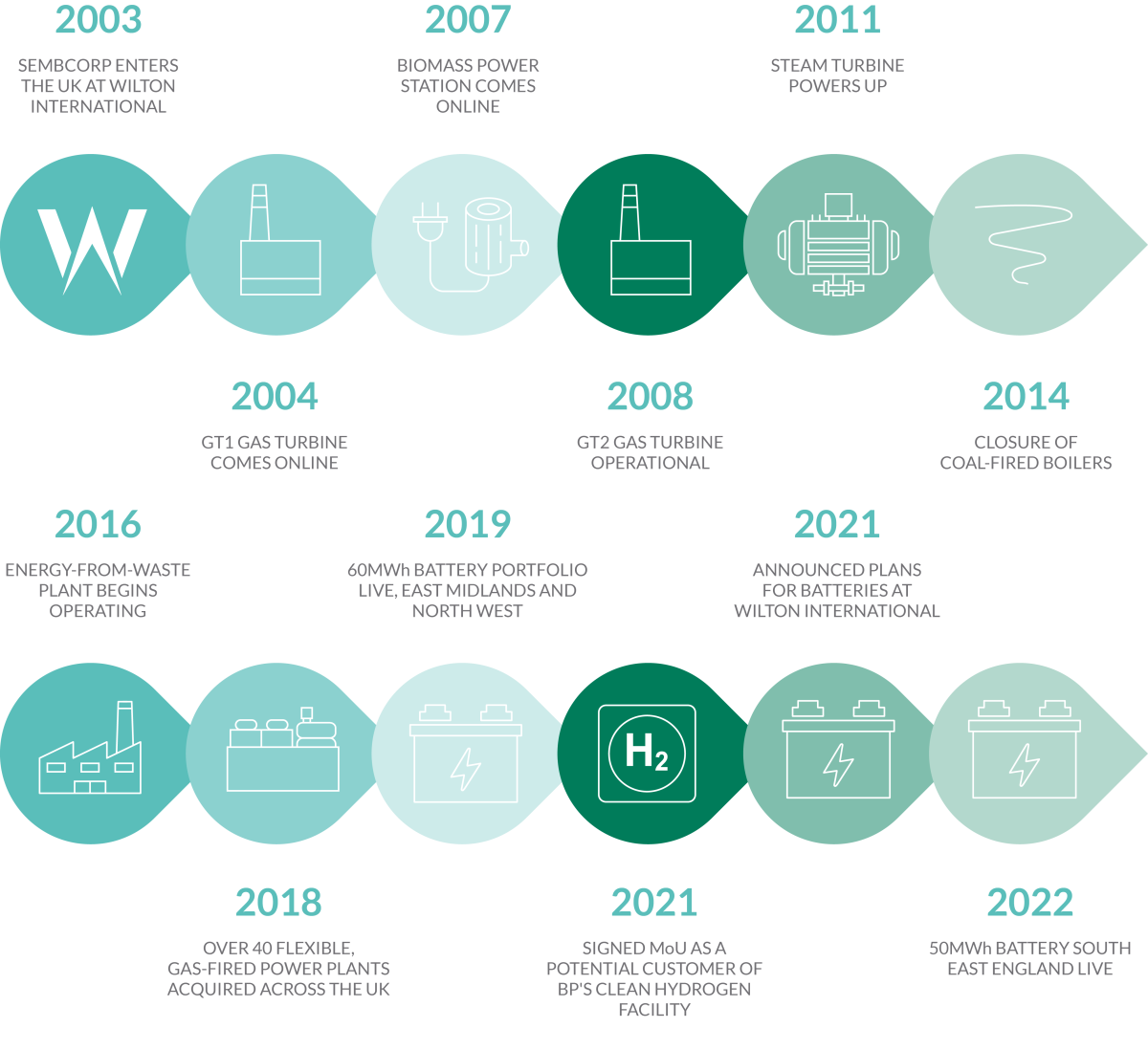Wilton International is a nationally significant site, offering utilities and services that enable on-site customers to create products such as PET (used in drinks bottles), ethylene, propylene, aniline, and bioethanol.
Take a look back at how Wilton has progressed on it’s journey towards a cleaner future and home of more sustainable fuel production.
How it all began
In 1926 Brunner Mond and Britain’s other major chemical manufacturers merged to form Imperial Chemical Industries – more familiarly known as ‘ICI’.
ICI bought the land where Wilton International now sits in late 1945 and the site was officially opened in 1949 by the then ICI Chairman, Lord McGowan.
Wilton International was designed to meet the huge post-war demand for plastics, fibres and other man-made materials.
Teesside is often most associated with steel and heavy manufacturing. However, in 1952 ICI opened a large Terylene plant at Wilton International. An alternative to wool and cotton fabric, Terylene was the first wholly synthetic fibre to be invented in the UK and large quantities were produced at ICI at Wilton International.
Such production put Wilton International ‘on the map’ – even the Queen visited in 1956.
One of the biggest landmarks of the site is of course the SABIC Olefins 6 plant – otherwise known as the ‘cracker’.
It was commissioned by ICI in 1979 as a liquid naphtha cracker. It was acquired by SABIC in 2006 and is currently being converted to be a “gas cracker”, running on ethane to produce ethylene.
Sembcorp at Wilton International
Moving to more recent history, the Wilton International complex was acquired by Sembcorp in 2003.

Sembcorp was swiftly able to make significant, ground-breaking investments at the site including the first gas turbine on the site and the largest stand-alone biomass plant in the UK.
This all supported the closure of the coal boilers in 2014, ahead of the Government’s 2015 commitment to phase out coal over the following 10 years. This demonstrated at an early stage Sembcorp’s decarbonisation credentials, further boosted by the later introduction of Sembcorp’s energy-from-waste plant came online.